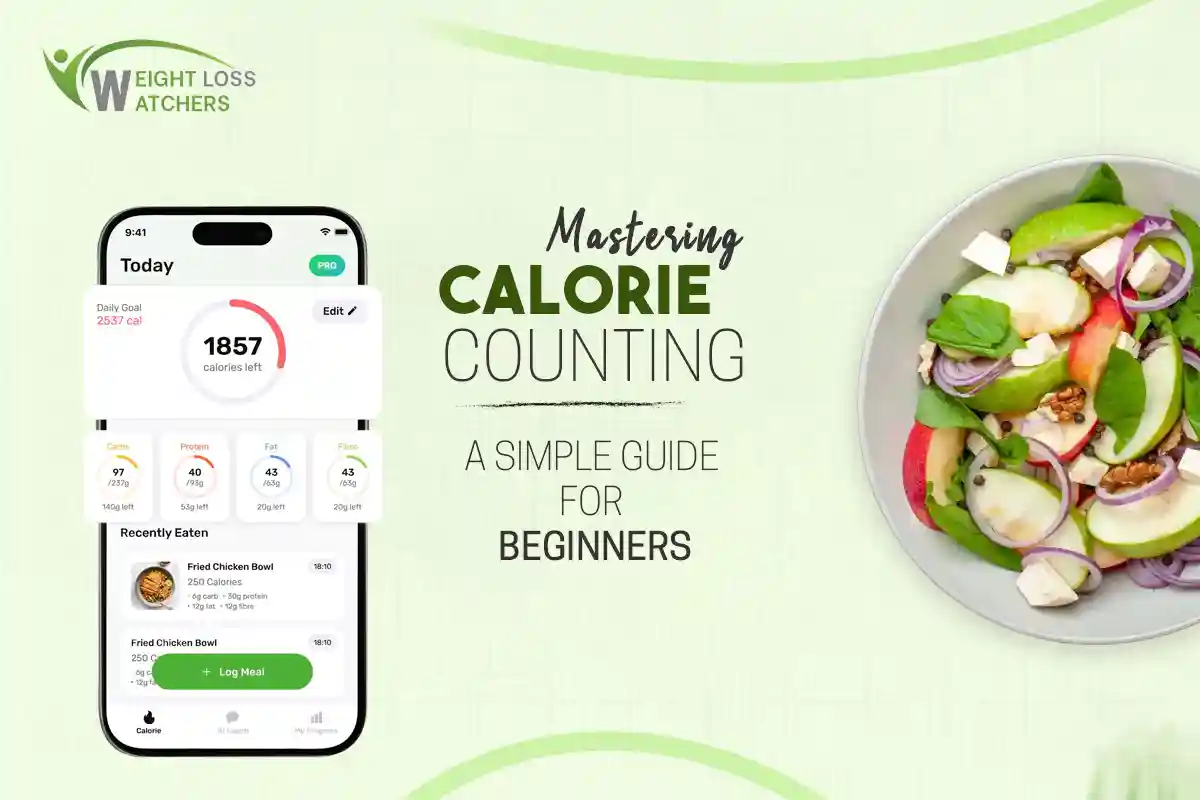If you’ve ever felt overwhelmed by the idea of calorie counting, you’re not alone. The concept can seem daunting numbers, tracking, and endless food labels. But here’s the good news: calorie counting is simpler than it seems, and it’s one of the most effective ways to take control of your health, whether your goal is weight loss, maintenance, or just understanding your eating habits. This guide breaks it down into easy, practical steps for beginners, with a human touch to keep it relatable and doable. Let’s dive in!
Why Calorie Counting Matters
Calories are the energy your body uses to function think of them as fuel for everything from breathing to running a marathon. Consuming the right amount of calories for your goals is key to staying healthy. Too many calories can lead to weight gain, while too few can leave you sluggish or even harm your metabolism over time. Counting calories helps you strike a balance, giving you insight into what you’re eating and how it aligns with your needs.
The beauty of calorie counting is its flexibility. It’s not about cutting out your favorite foods or following a strict diet. Instead, it’s about awareness and making informed choices. Ready to get started? Here’s how to make it work without feeling like you’re solving a math puzzle.
Step 1: Know Your Calorie Needs
Before you start tracking, you need a baseline your daily calorie needs. This depends on factors like age, gender, weight, height, activity level, and goals (weight loss, maintenance, or gain). A simple way to estimate this is by using an online calculator like the Mifflin-St Jeor equation, which is widely regarded as accurate. You can find free tools on websites like MyFitnessPal or the Mayo Clinic.
For example, a 30-year-old woman who’s 5’5”, weighs 150 pounds, and exercises moderately might need around 1,800–2,200 calories to maintain her weight, 1,400–1,800 to lose weight, or 2,200–2,600 to gain muscle. These are rough estimates, so adjust based on how your body responds over time. The key is to start with a number and tweak it as you learn what works.
Step 2: Get the Right Tools
Calorie counting doesn’t require fancy gadgets, but a few tools can make it easier:
- Food Tracking App: Apps like MyFitnessPal, Cronometer, or Lose It! are beginner-friendly. They let you log meals, scan barcodes, and even track nutrients like protein or fiber.
- Kitchen Scale: Weighing food is more accurate than eyeballing portions. A basic digital scale costs less than $20 and is a game-changer for precision.
- Measuring Cups and Spoons: These are great for liquids or foods that are hard to weigh, like oils or peanut butter.
- Notebook or Spreadsheet: If apps aren’t your thing, a simple journal works just as well.
Pick what feels intuitive to you. The goal is to make tracking a habit, not a chore.
Step 3: Learn to Read Food Labels
Food labels are your best friend when counting calories. Check the serving size first it’s easy to assume a package is one serving when it’s actually two or three. Then, note the calories per serving. For unpackaged foods like fruits, veggies, or home-cooked meals, apps or online databases (like the USDA’s FoodData Central) can provide estimates.
Pro tip: Don’t stress about being 100% accurate. Even restaurant calorie counts are estimates. Aim for consistency over perfection.
Step 4: Track Everything (Yes, Everything!)
For the first few weeks, log every bite, sip, and snack. That latte? The handful of chips? The olive oil you cooked with? It all adds up. Tracking everything gives you a clear picture of your habits. You might be surprised to learn that small things like a daily soda or extra butter can tip the calorie scale.
Be honest, but don’t judge yourself. The goal isn’t to feel guilty about eating a cookie; it’s to understand how that cookie fits into your day. Over time, you’ll develop an instinct for portion sizes and may not need to track as diligently.
Step 5: Make It Sustainable
Calorie counting can feel overwhelming if you treat it like a full-time job. Here’s how to keep it manageable:
- Plan Ahead: Prep meals or snacks in advance to avoid last-minute guesses. For example, portion out your lunch the night before.
- Eat What You Love: You don’t have to give up pizza or ice cream. Just account for them in your daily calorie budget. A small slice of cake can fit into a 1,600-calorie day just fine.
- Batch Log: If logging every meal feels tedious, try entering your whole day’s food at once, like in the evening.
- Focus on Patterns: Look at your weekly calorie average rather than stressing about one high-calorie day. Consistency over time is what matters.
Step 6: Adjust and Reflect
After a couple of weeks, check in with yourself. Are you losing, maintaining, or gaining weight as planned? If you’re not seeing the results you want, adjust your calorie target by 100–200 caloriesunionized foods, like yogurt or cottage cheese, may not have clear calorie counts on the label. Use a reliable app or database to estimate their calories. For example, a small container of plain Greek yogurt about 100g is roughly 60–80 calories, depending on the fat content.
Common Pitfalls to Avoid
- Forgetting Drinks: Sugary drinks, alcohol, or even milk can add hundreds of calories. Log them!
- Underestimating Portions: Eyeballing portions often leads to errors. Use a scale for accuracy.
- Ignoring Condiments: Sauces, dressings, and spreads can be sneaky calorie bombs. A tablespoon of mayo is about 90 calories!
- Obsessing Over Small Details: Don’t stress if you’re off by 50 calories. Focus on the big picture.
Final Thoughts
Calorie counting is a tool, not a lifestyle. It’s about building awareness, not restriction. Over time, you’ll develop a natural sense of what your body needs, and tracking may become second nature or you may not need it at all. Celebrate small wins, like noticing you feel more energized or fitting into your favorite jeans again. You’ve got this!




